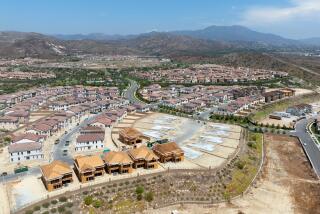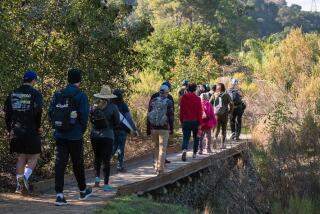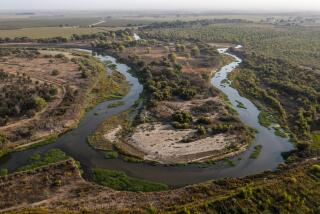Park’s museum will be a nod to El Toro’s history
- Share via
In years past, building a central park was about creating an escape from urban life with little nod to what it was replacing.
But the designers of the Orange County Great Park, which is being built on 1,347 acres of the former El Toro Marine Corps base, are taking a new approach, embracing the site’s military past rather than bulldozing it.
In one such move, the park’s board today plans to accept the donation of a World War II-era patrol plane and bomber as the first artifact for an aviation museum expected to feature dozens of historic aircraft and memorabilia.
Great Park board member Bill Kogerman, a retired Marine colonel who flew fighter jets at the base in the 1960s and ‘70s, said the 1943 Lockheed PV-1 Ventura was “a fairly old and rare acquisition.”
The model was used for night flights during World War II, stopping at El Toro on its way to the fighting in the Pacific. It is unclear if this particular plane landed at El Toro.
It is at an airfield in New Orleans after being so severely damaged by Hurricane Katrina that its owner gave it to an insurance company.
Park officials jumped at the opportunity to get the plane, calling it a modest first step toward the museum. But it also is a sign of an emerging focus of the Great Park project: preserving the base’s history while undertaking one of the nation’s largest public works projects.
“We want to speak to the fact that the military use of the site was actually what kept it from development and made it available,” said Ken Smith, the park’s landscape architect. “In the end, the park will be richer because people will see interesting ways of adapting historic structures and reusing them.”
Central to the park’s design is a 1 3/4 -mile-long historical timeline built atop one of the base’s original taxiways. Designers also are storing base memorabilia and colorful squadron murals for use in park buildings and museums.
Hangars are slated for restoration as a visitors center and museum site, and a control tower may be converted into a nature center, Smith said. Thick slabs of runway concrete, dubbed “El Toro stone” by designers, will become stepping stones on trails.
Tom O’Hara, curator of the Flying Leatherneck Aviation Museum at Marine Corps Air Station Miramar in San Diego, was hired as the Great Park’s aviation consultant, and now scouts potential acquisitions throughout the country via e-mail and phone.
Early this month, he flew to an airfield outside New Orleans to see the Lockheed PV-1 Ventura. The 65-year-old plane had sustained major hurricane damage. It was missing a door and tires, and it had a hole in one of its wings. But the craft was a find because it is one of only 3,000 made, O’Hara said.
The plane is likely to be the first of many since the park board has set aside $500,000 to start and maintain an aircraft collection.
In procuring the Great Park’s first airplane, O’Hara, the aviation consultant, spared no attention to detail. The wings and fuselage will be disassembled and loaded onto two wide-load trucks, then driven to Orange County as early as next month, where the plane will be reassembled and restored at the base at a cost of $70,000. One key adjustment will be trading its light-blue paint job for olive drab.
“The color scheme in those days was not very exotic,” O’Hara said. “We want it to be historically accurate.”
--
More to Read
The biggest entertainment stories
Get our big stories about Hollywood, film, television, music, arts, culture and more right in your inbox as soon as they publish.
You may occasionally receive promotional content from the Los Angeles Times.











